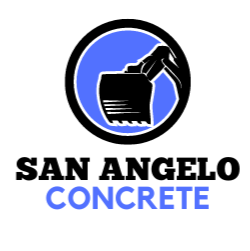What is concrete resurfacing
If you have ever walked down a sidewalk or driveway with cracks, chips, or grooves running through it, you’ve probably felt some level of dissatisfaction with the look. Resurfacing your concrete might seem like a daunting task — after all, who wants to spend so much time and money on something that will be hidden by new coatings? Fortunately, resurfacing can be as simple as sweeping away the old layer with a broom or vacuum. A bit more in-depth maintenance is required for optimal results, but the process is still relatively straightforward once you know where to look. The article below outlines what resurfacing is, how often you need to do it, and why it’s important. Keep reading to
learn more.
What is Resurfacing?
As concrete ages, it naturally develops small cracks and rough edges. The cracks may develop because of movement of the concrete as a result of temperature changes or because of expansion and contraction of the concrete. The rough edges may be the result of the concrete being ground down over time, as well as from the use of certain construction materials, like aggregates too large for the cement to “bond” with. If you look closely at the surface of your concrete, you may notice that the color has faded in some areas, or that the surface has a few small chips or cracks. This is normal and happens to every surface as it ages. If you want to keep your driveway looking beautiful and new, you need to resurface it.
Is it Worth It to Resurface My Concrete?
Yes, it is worth it. Resurfacing your concrete will not only improve the appearance of your driveway, but it can also help increase its lifespan. Even if you don’t drive over your driveway very often, it’s important to periodically sweep or vacuum your driveway so that the surface has a chance to breathe and stay clean. Resurfacing your concrete will also increase the lifespan of your driveway because it will be less likely to fracture from freeze-thaw cycles and also be less likely to develop cracks from expansion and contraction. A resurfaced driveway will likely last longer and require less maintenance. Prolonged exposure to the sun’s ultraviolet rays can also cause your driveway to fade and lose its color. A resurfaced driveway will protect the surface and make it last longer.
Pros and Cons of Resurfacing
While resurfacing is a beneficial step for maintaining the life of your concrete driveway, it’s important to keep in mind the potential cons as well. Resurfacing is not a one-time fix, but it’s a necessary step to maintain a beautiful and lasting driveway. Here are some pros and cons to consider: Pros Potential lifespan increase of 3-10 years. Protects your driveway from UV rays, which can cause fading. Improves the look of your concrete by smoothing out the surface. Helps prevent future cracks and fractures in your concrete by smoothing out the surface. Resurfacing can be done during off-peak months and/or during the off-season, when there are less vehicles on the road. Cons Resurfacing is a process that requires you to remove the old layer with a broom or vacuum before applying the new layer. You’ll need to wait several days for the new layer to cure. You don’t want to drive over your resurfaced driveway until the new layer has completely cured, and you need to carefully sweep or vacuum away any dust or dirt that falls off the surface before driving.
Final Words
If you need to resurface your driveway, you have a few options to get it done. You can call a company and have them come out to do it for you, or, you can do it yourself. In order to resurface your driveway, you’ll need to find a smooth, flat, non-porous surface to work on. If you have a concrete driveway, you might consider sweeping the dust and debris off of it and then applying a fresh coat of paint to help protect the surface. After you’ve picked a suitable area, you’ll need to collect your materials and get ready to start. Your first step is to sweep any loose debris off of your driveway. Next, you’ll need to remove the existing surface with a broom or power vacuum. Once the surface is completely clear of any dust or dirt, you can start to prepare your new layer. Before you can start laying the new layer, you’ll need to remove any dust, dirt, or loose material from the top of your driveway. You can use a pressure washer to remove any dirt and dust, or you can use a shovel or shoveling attachment on your power vacuum. You’ll want to make sure all of the loose material and dust has been removed before you apply the new layer. Once you’ve cleared the driveway of dirt, you can start to lay the new layer. It’s important to keep in mind that the new layer will be much less durable and flexible than your original concrete.
discover more about san angelo here
Call us Today!
We believe that ensuring there is an open line of communication between ourselves and our valued customers is essential in running a successful business. That is why we have staff who are dedicated to answering your calls and responding to your emails. We want to hear if you have any questions , queries or concerns regarding any of the services that we offer. Please do not hesitate to give us a call or send us an email if you would like to learn more about our services or if you would like to book is for a job.
The region's leading concrete contractors!
Navigation
Navigation
Services
Working hours
- Mon - Fri
- -
- Sat - Sun
- Closed
Working hours
- Mon - Wed
- -
- Thu - Sat
- -
- Sunday
- -
